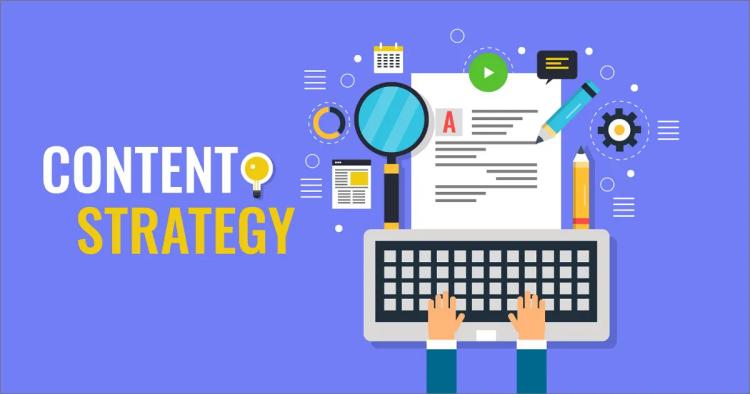In today's digital age, where information is available at our fingertips, it's more important than ever to ensure that the sources we rely on are credible. With the abundance of content online, it can be challenging to differentiate between reliable and unreliable sources.
However, determining credible sources is critical, especially when conducting research or making important decisions based on the information at hand.
In this blog post, we will discuss what credible sources are, why they are important, and how to spot them using Copychecker, a tool designed to detect plagiarism and analyze the authenticity of online content.
We will also provide examples of credible sources and discuss how they can be used effectively in research and decision-making.

What Makes a Source Credible?

Credible sources are reliable and trustworthy sources of information that have been thoroughly researched, fact-checked, and verified. They are authoritative and are usually created by experts in their respective fields.
Credible sources can be found in various forms, such as academic journals, books, government publications, and reputable news sources.
The information provided by credible sources is typically backed up by evidence, and their authors have no personal or financial interest in the information presented.
Why Are Credible Sources Important?

Credible sources are important because they provide accurate and reliable information that can be used to make informed decisions. When conducting research or making decisions, it is essential to rely on sources that are based on facts, not opinions or unverified claims.
Using credible sources can help ensure that the information being used is accurate, unbiased, and supported by evidence.
Additionally, using credible sources can help to avoid the spread of misinformation and fake news. In today's world, where social media and online news sources are prevalent, it is important to be able to differentiate between factual information and false or misleading content.
How to Spot Credible Sources Using Copychecker

Copychecker is a tool designed to help writers and researchers identify plagiarism and check the authenticity of online content. It is a powerful tool that can be used to determine the credibility of sources.
Here are some tips on how to use Copychecker to spot credible sources:
Check the Author's Credentials
One way to spot credible sources is to check the author's credentials. If the author is an expert in their field, their work is likely to be more credible than someone without the same level of expertise.
Copychecker can help you determine the author's credentials by searching for their name and qualifications in academic and professional databases.
Look for Evidence-Based Information
Credible sources are based on evidence, not opinion. Look for sources that provide data, statistics, and other forms of evidence to support their claims.
Copychecker can help you identify sources that rely on evidence-based information by analyzing the content and checking for inconsistencies.
Check for References and Citations
Credible sources usually include references and citations to other sources that support their claims. Copychecker can help you determine if a source includes references and citations by searching for keywords and phrases that indicate the use of supporting sources.
Check the Publication Date
When using online sources, it is important to check the publication date to ensure that the information is current and relevant. Copychecker can help you determine the publication date by searching for the source's metadata.
Look for Reputable Publishers
Reputable publishers are more likely to publish credible sources. Copychecker can help you identify reputable publishers by analyzing the publication's metadata and comparing it to other reputable publishers in the same field.
How to Use Copychecker Tool For Fact Check
Copychecker is a tool that can help you determine the credibility of sources by checking for plagiarism and identifying the original source of a news article. Here are some steps to use Copychecker to find credible sources:
- Copy and paste the text of the article you want to check into the Copychecker tool.
- Wait for the tool to analyze the article and provide a report on its credibility.
- Check the report for any instances of plagiarism or potential red flags.
- Use the information provided by Copychecker to verify the information in the article and determine its credibility.
By using Copychecker to check the credibility of news sources, you can ensure that the information you use for research purposes is accurate and reliable.
The CRAAP Test

The CRAAP Test is a method for evaluating sources based on five criteria: Currency, Relevance, Authority, Accuracy, and Purpose. By applying the CRAAP Test to a source, you can quickly determine whether it is credible and trustworthy.
Here's a breakdown of each of the criteria:
Currency
Currency refers to how current the information is. If the source is outdated, it may not be accurate or relevant anymore. Look for information on when the source was published and consider whether the information is still valid.
Relevance
Relevance refers to how useful the information is to your research or topic. Ask yourself if the information provided in the source is relevant and applicable to what you are researching.
Authority
Authority refers to the credibility of the source. Determine who the author or publisher is and consider their expertise and credentials. Look for information on their affiliations and if they have a reputation for accuracy and reliability.
Accuracy
Accuracy refers to how reliable and precise the information is. Look for evidence and data to support the claims made in the source. Check to see if the information is consistent with other sources.
Purpose
Purpose refers to the reason the source was created. Consider whether the source has an agenda, bias, or intention to persuade. Look for information on the intended audience and whether the source is trying to inform or persuade.
By using the CRAAP Test, you can evaluate sources quickly and confidently. Remember to take a critical approach to the sources you encounter, and always verify the information before accepting it as true.
Examples of Credible Sources

To help you identify credible sources, here are some examples of sources that are generally considered reliable and trustworthy:
Academic Journals
Academic journals are an excellent source of information, especially for research papers and academic work. These journals have gone through rigorous review processes, ensuring that the content published is accurate and credible.
Articles in academic journals are written by experts in the field and are based on empirical research, making them highly trustworthy.
Government Websites
Government websites can be an excellent source of information, especially for topics related to law, policy, and regulations. The information on these websites is often based on official reports, data, and research, making it highly credible.
Established News Outlets
Established news outlets such as CNN, BBC, and The New York Times are generally considered reliable sources of information.
These outlets employ professional journalists who adhere to a code of ethics and are held to high standards of accuracy and objectivity. They also use multiple sources to verify the information and correct mistakes promptly and transparently.
Industry Publications
Industry publications are a great source of information for topics related to specific industries or professions. These publications are often written by experts in the field and are based on current trends, data, and research.
They are highly trustworthy and can provide valuable insights into specific industries or professions.
Books by Experts in the Field
Books written by experts in a particular field can be highly reliable and trustworthy sources of information.
These books are often based on extensive research and are written by authors with extensive knowledge and expertise in their respective fields.
By using these examples as a starting point, you can begin to identify credible sources and feel confident in the accuracy and reliability of the information you are using.
How to Evaluate Online Sources

Online sources are abundant, but not all of them are credible. Here are some tips for evaluating online sources:
- Look for sources that have an "https" in their URL, which means they are secure.
- Check the website's domain name to ensure it is reputable.
- Look for the author's credentials and reputation.
- Check the website's "About" page for information about the organization or author.
- Look for evidence-based information to support the claims made on the website.
- Check the website's publication date and update the status.
By evaluating online sources with these tips in mind, you can find credible sources that can be used in research or decision-making.
How to Spot Misinformation and Fake News

Misinformation and fake news are becoming increasingly prevalent in today's digital world. Here are some tips for spotting misinformation and fake news:
- Look for sensational headlines that are designed to grab your attention.
- Check the source of the information to ensure it is credible.
- Check for evidence-based information to support the claims made in the article.
- Be wary of articles that lack sources or evidence.
- Look for bias or agenda in the article.
- Use a fact-checking tool like copychecker to verify the information.
By being aware of these tips, you can spot misinformation and fake news and avoid making decisions based on inaccurate information.
The Importance of Fact-Checking

Fact-checking is essential when evaluating sources. Here are some reasons why:
- It ensures that the information you are using is accurate and supported by evidence.
- It helps you avoid making decisions based on inaccurate or biased information.
- It prevents the spread of misinformation and fake news.
- It helps you build a credible and trustworthy reputation.
By fact-checking the sources you encounter, you can ensure that you are using accurate and credible information to make informed decisions.
Using Primary Sources
Primary sources are sources that provide first-hand information about a particular topic. Here are some examples of primary sources:
- Original research studies
- Interviews with experts
- Government reports
- Diaries or letters
- Historical documents
Using primary sources is a great way to ensure that the information you are using is accurate and supported by evidence. It is important to ensure that the primary sources you are using are credible and reliable.
Using Secondary Sources
Secondary sources are sources that provide information about primary sources. Here are some examples of secondary sources:
- Articles that summarize research studies
- Books that analyze historical events
- News articles that report on government reports
- Tools like copychecker to analyze if the source is plagiarized or not.
Using secondary sources can be helpful in providing additional context and analysis of primary sources. However, it is important to ensure that the secondary sources you are using are credible and reliable.
The Importance of Peer-Reviewed Sources

Peer-reviewed sources are sources that have been reviewed by experts in the same field before they are published. Here are some reasons why peer-reviewed sources are important:
- They ensure that the information is accurate and supported by evidence.
- They help to prevent bias or agenda in the information.
- They provide an additional level of credibility to the information.
By using peer-reviewed sources in research and decision-making, you can ensure that the information you are using is accurate and reliable.
Tips for How to Use These Strategies Effectively

Here are some tips for using the above-mentioned strategies effectively:
- Start with a clear understanding of what you are looking for and why you need it.
- Be open to exploring a variety of sources and perspectives.
- Use multiple sources to verify the information and ensure its accuracy.
- Check the credentials of authors, organizations, and sources.
- Pay attention to the dates of publication and updates to ensure the information is up to date.
- Take notes and keep track of your sources for easy reference later.
- Use a plagiarism checker tool like Copychecker to ensure that the sources you are using are not plagiarized.
By following these tips, you can ensure that you are using the strategies effectively and finding credible sources to support your research and decision-making.
Common Mistakes People Make When Evaluating Sources

When evaluating sources, there are several common mistakes that people make, including:
- Relying on a single source without verifying its accuracy.
- Failing to consider the bias or agenda of the author or source.
- Not checking the credentials or reputation of the author or source.
- Assuming that information found on the internet is always accurate.
- Failing to check the publication date and update the status of the information.
- Ignoring contradictory information or perspectives.
How to Avoid These Mistakes

To avoid these mistakes when evaluating sources, you should:
- Use multiple sources to verify the information and ensure its accuracy.
- Consider the author's credentials and reputation before accepting their information as credible.
- Look for bias or agenda in the information and seek out additional sources to balance the perspective.
- Be cautious when using the information found on the internet and check the credibility of the website or source.
- Check the publication date and update the status of the information.
- Consider all perspectives and contradictory information before concluding.
By avoiding these common mistakes, you can ensure that you are taking a critical and thorough approach to evaluating sources.
The Importance of Verifying Information Before Accepting it as True

The importance of verifying information before accepting it as true cannot be overstated. Verifying information involves:
- Checking the credibility of the source and author.
- Examining the sources and evidence used to support the information.
- Seeking out multiple perspectives and contradictory information.
- Checking the publication date and update the status of the information.
- Using a plagiarism checker tool like Copychecker to ensure the information is original and not plagiarized.
By verifying information before accepting it as true, you can ensure that you are making informed decisions based on accurate and reliable information. This is critical for research, decision-making, and any situation where accurate information is important.
FAQs
Here are some frequently asked questions about evaluating sources:
What is the CRAAP test?
The CRAAP test is a set of criteria used to evaluate sources for research purposes. The acronym stands for Currency, Relevance, Authority, Accuracy, and Purpose.
By evaluating sources using these criteria, researchers can ensure that the sources they use are credible and reliable.
How to tell if a news source is credible?
When evaluating a news source, there are several factors to consider. Look for reputable news sources that have a history of accurate reporting and are known for their journalistic integrity. Consider the author's credentials and reputation and verify the information by checking multiple sources.
Look for evidence-based information to support the claims made in the article and be wary of articles that lack sources or evidence.
How to tell if a source is credible?
To tell if a source is credible, there are several strategies you can use. Look for reputable sources that have a history of accurate reporting and are known for their credibility.
Check the author's credentials and reputation and verify the information by checking multiple sources. Look for evidence-based information to support the claims made in the source and be wary of sources that lack sources or evidence.
What are examples of academic dishonesty?
Academic dishonesty can take many forms, including:
- Plagiarism
- Cheating on exams or assignments
- Falsifying data or research findings
- Fabricating sources or citations
- Submitting work that was completed by someone else.
Academic dishonesty is a serious offence that can have severe consequences, including expulsion from school or revocation of degrees.
What is the definition of peer review?
Peer review is a process used by academic journals and publications to evaluate the quality and credibility of research articles before they are published. Peer review involves a panel of experts in the same field who review the article and provide feedback to the author. The purpose of peer review is to ensure that the research is accurate, supported by evidence and meets the standards of the academic community.
How can you tell if a source is primary or secondary?
To determine if a source is primary or secondary, it is important to consider the nature of the source. Primary sources are sources that provide first-hand information about a particular topic, such as original research studies or historical documents. Secondary sources are sources that provide information about primary sources, such as articles that summarize research studies or books that analyze historical events. By evaluating the nature of the source, you can determine if it is primary or secondary.
Conclusion
In conclusion, evaluating sources is an important skill that is critical for research and decision-making. By using strategies like using multiple sources, checking credentials, and verifying information, you can ensure that the sources you are using are credible and reliable.
Tools like Copychecker can be helpful in identifying plagiarism and verifying the authenticity of online content. By taking a critical approach to sources and fact-checking information, you can make informed decisions based on accurate and trustworthy information.




